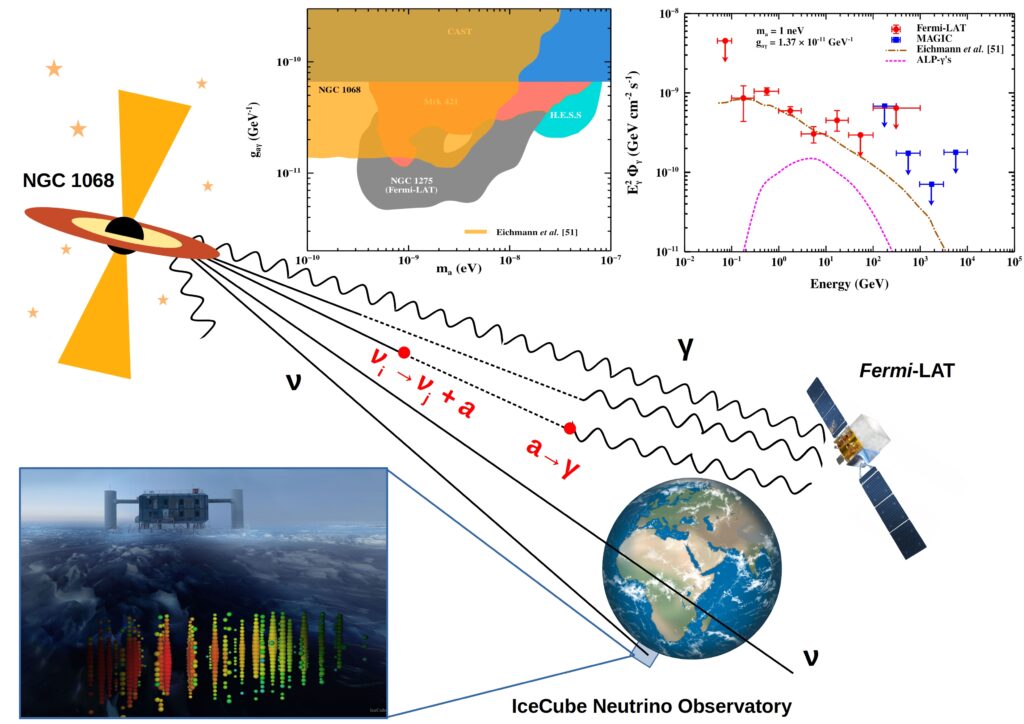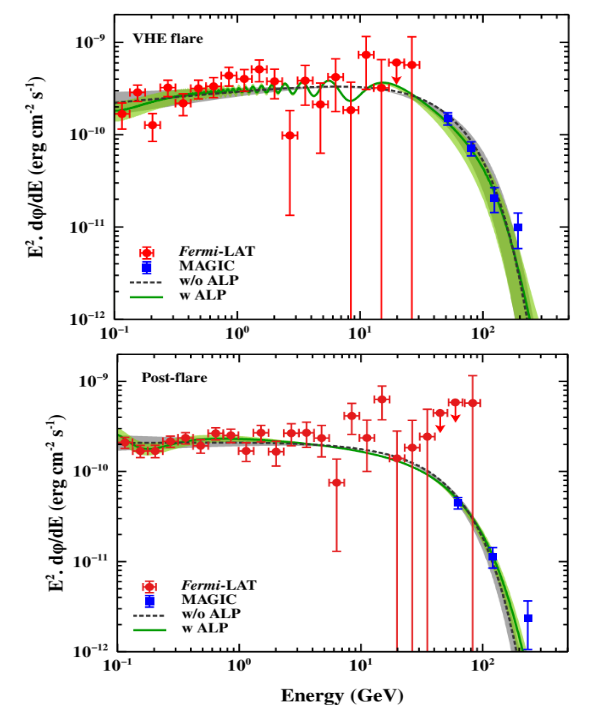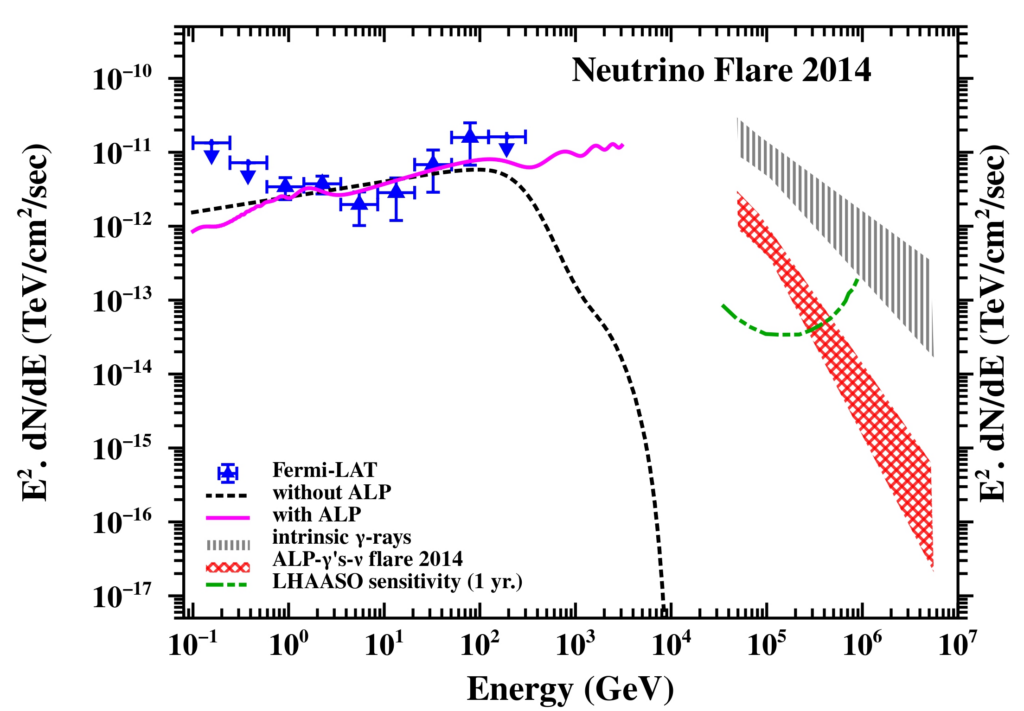Summaries of my research projects. Collaborators are highlighted with links to their profile.

Constraining axion-like particles with invisible neutrino decay using NGC 1068
In November 2022, the IceCube observatory detected an excess of neutrino events coincident from the direction of NGC 1068, which is a type-2 Seyfert galaxy located at about 47 million light-years. It is the second-only astrophysical neutrino source detected by IceCube so far. We used a novel scenario of invisible neutrino decay to axion-like particles (ALPs) and exploited the neutrino and gamma-ray observations of NGC 1068 to constrain the ALP parameters. We were able to put upper limits of gaγ ≲ 1.37 x 10-11 GeV-1 for ALP masses ≤ 2 x 10-9 eV at a 95% confidence level (CL). The implications of the ALP hypothesis on the extragalactic diffuse gamma-ray flux were also investigated.
Published in Phys. Rev. D (2024).

Probing axion-like particles with FSRQ QSO B1420+326
FSRQ QSO B1420+326 is the fourth most distant blazar with observed VHE gamma-ray emission by MAGIC. In this project, we utilize the gamma-ray observations by Fermi-LAT and MAGIC to obtain 95% C.L. constraint on the photon-ALP coupling constant gaγ ≲ 2.0 x 10-11 GeV-1 for ALP masses ma ~ 10-10 – 10-9 eV. Assuming the possibility of the source being a multimessenger, the expected neutrino flux for three different gamma luminosities was estimated and found to lie below the detection threshold of IceCube. Moreover, the contribution to diffuse neutrino flux from similar FSRQs was found to be sub-dominant compared to blazars. Finally, we investigated the implications of invisible neutrino decay to ALPs and found that for gamma luminosity 1052 erg/sec, the residual gamma rays may show up above the one-year detection threshold by LHAASO.
Published in Phys. Rev. D (2024).

Implications of photon-axionlike particle mixing in TXS 0506+056
TXS 0506+056 is the first-ever extragalactic neutrino source from which a neutrino of ~290 TeV was detected on September 22, 2017 (IC170922A) by the IceCube Neutrino Observatory. Using gamma-ray observations around the IC170922A alert and the Neutrino Flare in 2014, we were able to exclude a narrow region of gaγ > 5 x 10-11 GeV-1 for ALP mass ~ 4 x 10-7 eV at 95% confidence level (CL). Using neutrino observation, we estimated the residual gamma-ray flux on Earth at sub-PeV energies under the ALP scenario and found that for the Neutrino Flare 2014 phase, the residual flux lies above the 1-year detection sensitivity of point sources by Large High Altitude Air Shower Observatory (LHAASO). In addition, we also estimated the diffuse gamma-ray flux from various classes of flat-spectrum radio quasars (FSRQs).
Published in Phys. Rev. D (2023).